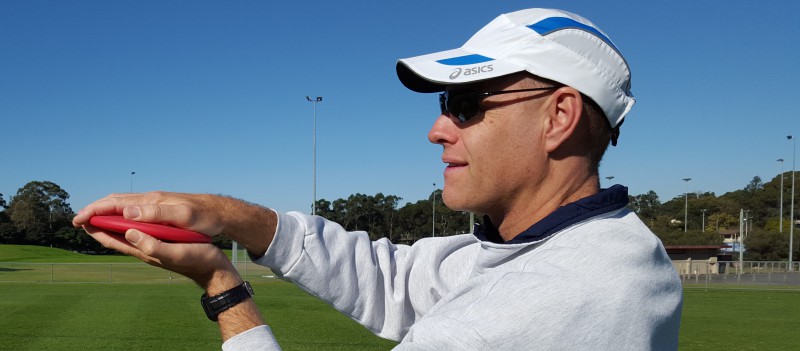Be Proactive About Conduct When Coaching Young Athletes
Coaches of young athletes must show leadership when it comes to their athletes’ conduct.
Athletes showing good sportsmanship is not only in the best interests of the sport but also in the best interests of the coach. A young athlete’s conduct will reflect directly on their coach.
During more than 20 years of coaching representative youth track & field teams to national championships I learned to be proactive about this issue. A reactive response to poor sportsmanship is often too little too late, with the damage already done and reputations negatively affected. Strategies must be put in place to stop poor sportsmanship from occurring in the first place.
Understanding what may cause poor sportsmanship helps us to develop such strategies.
Causes of Poor Sportsmanship
I have found that the following may contribute to poor sportsmanship:
The Behaviour of the Offender’s Coach
There is no doubt that a coach’s attitude will rub off on his or her athletes. In the lead-up to an event, if a coach makes disrespectful comments or belittles or mocks an opponent as a tactic to somehow “motivate” his or her athletes, the coach is giving their permission for the athletes to act in this way as well. Any poor sportsmanship on the part of a coach immediately erodes any authority that the coach has to demand good sportsmanship from his or her athletes.
Overblown Team Rivalries
Sporting rivalries taken too far can result in acts of bad sportsmanship. Coaches making out opponents to be the “bad guys” or the “enemy”, or stirring up their athletes to dislike or distrust an opposition is inviting poor sportsmanship from young athletes.
Feeling a fierce pride in, and loyalty to, a team or group is positive to a point but must be carefully managed by a coach otherwise it can boil over to become nasty and resentful towards others.
Athletes Seeking Attention
Even a usually sensible young person can have a “brain explosion” and act out of character when they are trying to “show off” in front their peers. Much bad sportsmanship, such as yelling out inappropriately, making snide comments or publicly taunting other competitors, occurs when the offender is trying to impress or get a laugh from their peers.
Lack of Team Pride & Discipline
Poor sportsmanship can often be predicted in advance of it occurring. I can see it coming a mile away by taking note of a group’s demeanor. Poor discipline, a lack of pride in appearance, too much swagger, lots of smirking, an air of superiority and a lack of respect towards their own coaches/managers, are some predictors.
Absence of Team Parameters & Guidelines
If young athletes are not directly told by the coach what is considered good and bad sportsmanship, and what is acceptable and not acceptable, many will remain ignorant of the type of behaviour expected. How can young athletes know how to act if they are not specifically told?
Tips for Teaching Good Sportsmanship
Good sportsmanship can, and should be taught by coaches. I have found the following coach-led actions can have positive results:
Role Model Good Behaviour in Words & Actions
When in discussions with young athletes, coaches need to speak about the opposition with respect. The opposition should be spoken about as real people and not some faceless “enemy”.
When coaches interact with opposition coaches or athletes, they must demonstrate respect. For example, I always ensure that my athletes see me approach, shake hands, smile and chat with the opposition coaches. This communicates that a camaraderie and good will exists between the coaches that will hopefully filter down to the athletes.
Instil Pride and Discipline in the Group
If young athletes are proud of and care about their team and its image, they are less likely to undertake actions that may harm it. They are also less likely to condone or encourage behaviour in others that may damage the reputation of the group.
This environment can be developed by demanding certain basic standards within the group that will naturally extend into other areas. Such standards may relate to things like:
- How they interact with each other
- Looking and acting professionally whenever they are together as a group
- Respect of a team curfew
- Adopting a “team first” attitude
Create Positive Expectations
Creating a self-fulfilling prophecy among athletes by making statements that begin with “This is a team that always….” or “This team is known for…” and adding whatever reference to good sportsmanship you feel necessary can have a positive effect. For example, if a team has a significant history, athletes need to feel a duty to maintain and build on the hard work that has been done by those before them to create a positive team reputation.
Create & Discuss Specific Behaviour Guidelines
Coaches need to educate their athletes about what is considered appropriate and acceptable behaviour, particularly if they are representing a team or organization.
As part of the lead-up to a national championships I always conducted a discussion with the team about how they are expected to behave whilst at the event. This is based on behaviour guidelines that I developed some years ago.
It is important that the coach actually discusses such guidelines with the athletes, rather than merely hand the guidelines around in the hope that some may read them.
This allows each statement within the guidelines to be clarified and illustrated with examples, stories, a few case studies and possible scenarios included. Coaches and athletes must be on the same wavelength. There must be no opportunity for a young athlete to plead ignorance later on. Any potential future discretion is then a “choice” by the athletes to ignore the guidelines, to which there is no defense.
Below is a version of the guidelines that I have adapted for this article. The guidelines are based around respect – for team and teammates, for other teams and for officials.
Guidelines for Team Member Behaviour
Respect for Teammates and Team
Our Team Members:
- Compete for their team and their teammates.
- NEVER EVER give up.
- Demonstrate their best effort all the time – ahead or behind.
- Look professional; act professional.
- Stay with their team. Support their teammates.
Respect for Other Teams
Our Team Members:
- Do not yell at opponents from the sidelines.
- Cheer their teammates; but not when athletes from other teams make an error or don’t perform well.
- Shake hands meaningfully after an event.
- Treat the athletes and management from other teams with respect.
- Don’t pout or carry on if they make an error or don’t perform well. (They learn from it and get on with it).
- Do not whine or make excuses, especially when talking with athletes from other teams.
- Don’t ever act smart or cocky. (If we come first, we don’t rub it in).
Respect for Officials
Our Team Members:
- Address officials in a polite manner.
- Do not argue with officials.
- Are encouraged to thank/shake hands with officials after an event.
Sportsmanship
Sportsmanship is the ability to:
- Win without gloating
- Lose without complaining
- Treat your opponents with respect
How do you teach kids about good sportsmanship?
Let me know by leaving a comment/reply or by using the below contact details.
If this post helped you please take a moment to help others by sharing it on social media. If you want to learn more I encourage you to leave questions and comments or contact me directly.
Darren Wensor is a sports development professional, coach educator, specialist coach of young athletes, and founder of the blog coachingyoungathletes.com. Learn more about him here and connect with him on Twitter, Facebook, Linkedin, or via email. Check out Coaching Young Athletes on YouTube, the Coaching Young Athletes podcast, and the Coaching Young Athletes E-Book Series.


Thanks to ‘Coaching Young Athletes’ for this article on #sportsmanship… keep #RaisingTheBar! I especially appreciated your comment about “shaking hands meaningfully after the event.” I believe this is a great teachable moment to foster the life-skill of integrity –> look someone in the eye, without compromise or deceitfulness, and wish them well. Thanks again! (“It’s about much more than sports!”)
LikeLike
Thanks for the feedback. In relation to shaking hands, I will actually go as far as to demonstrate to the team what I consider an appropriate handshake then contrast it with a demonstration of a “halfhearted” shake. This makes it clear what is considered acceptable and what is unacceptable.
LikeLike
[…] How to Teach Your Athletes About Good Sportsmanship […]
LikeLike